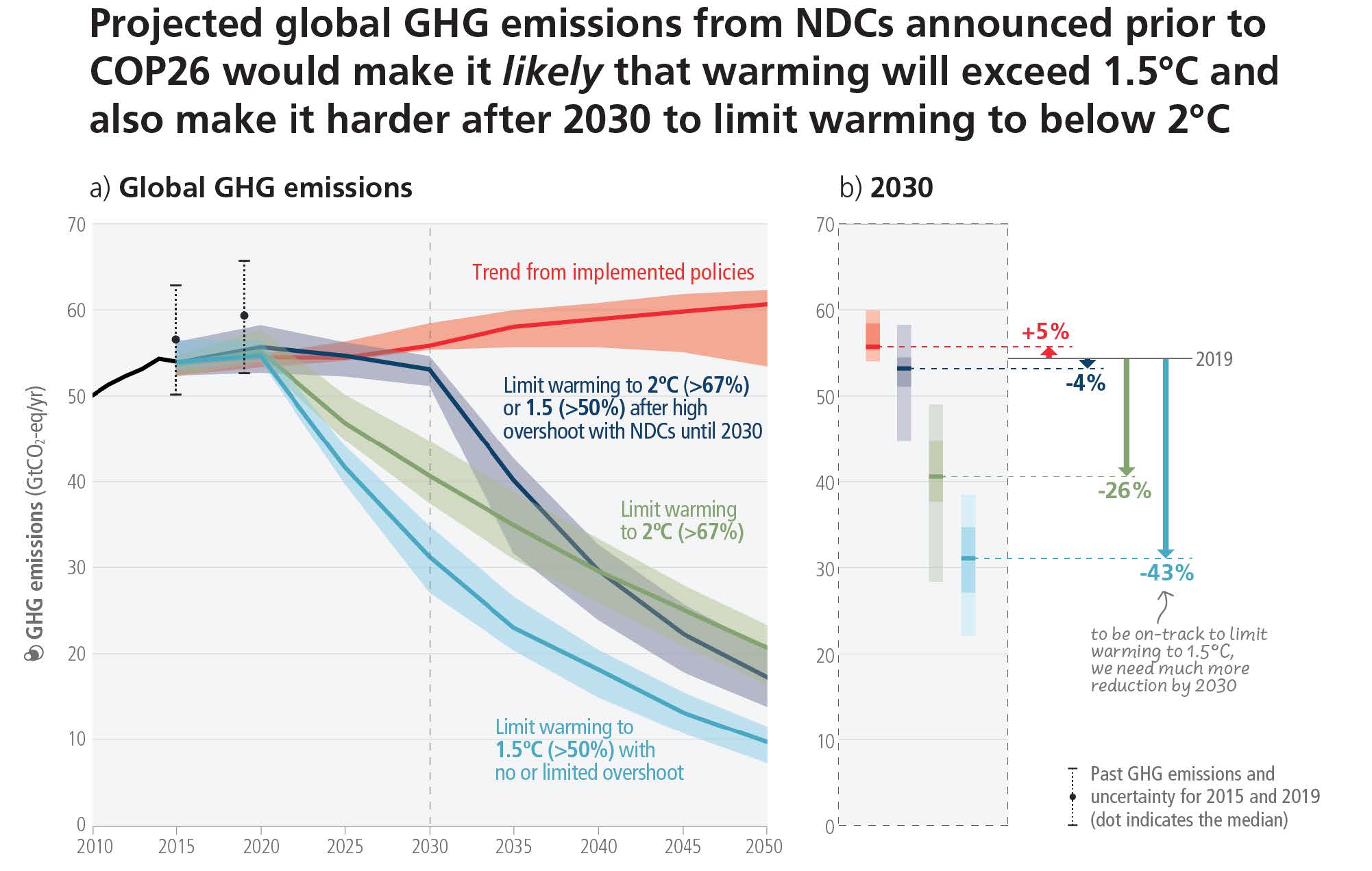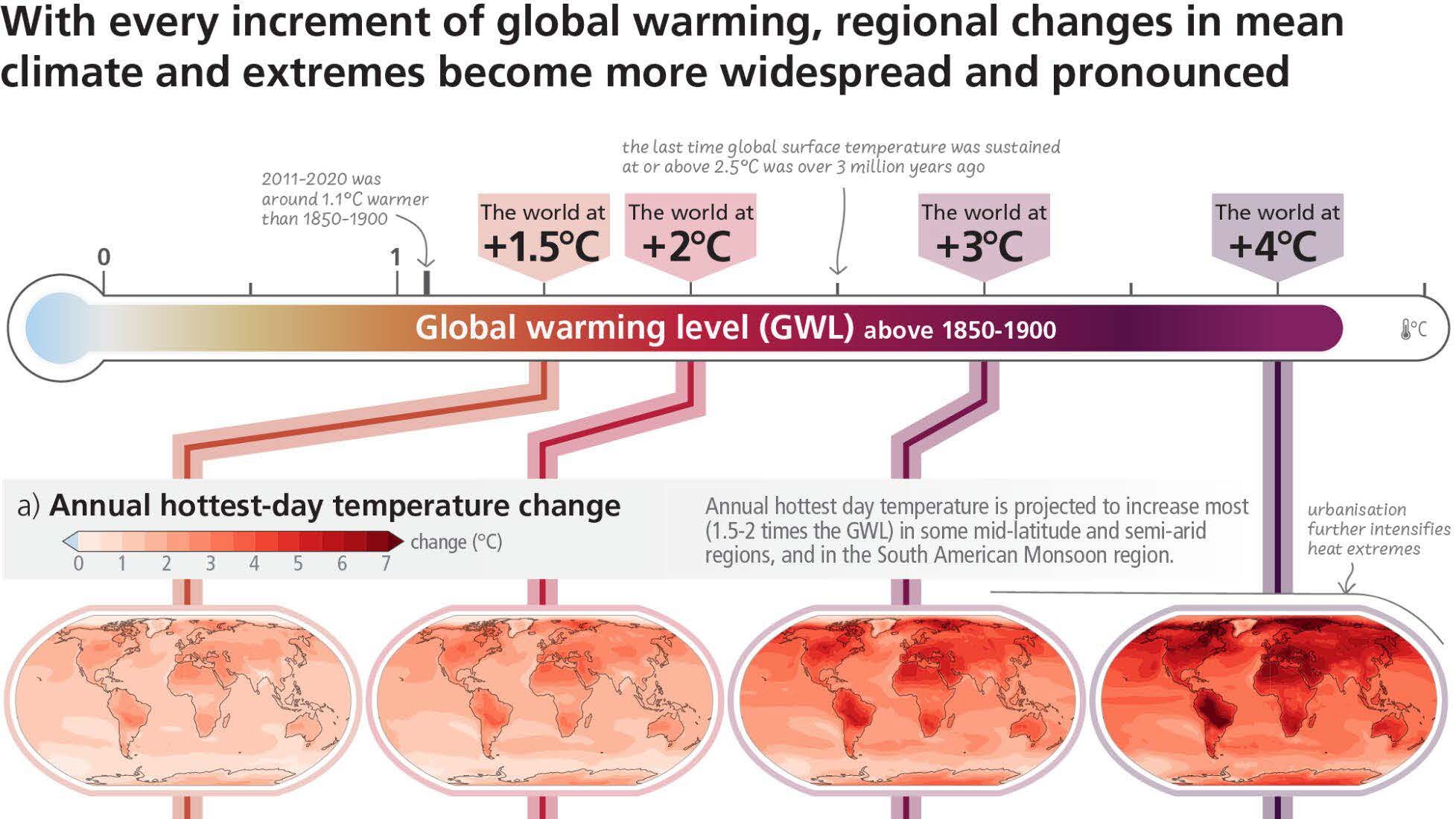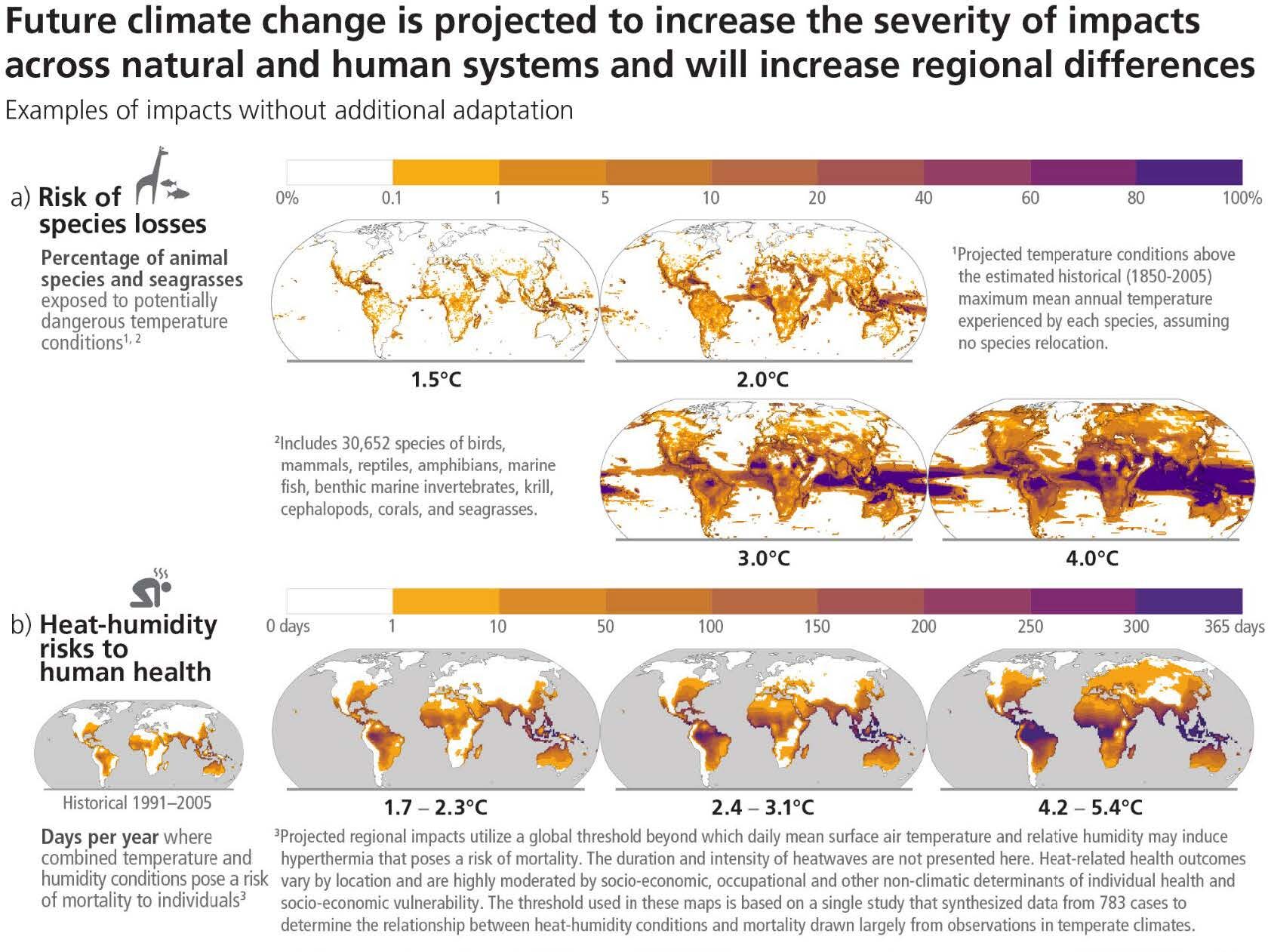
Last week, the Intergovernmental Panel on Climate Change formally approved and released the IPCC AR6 Synthesis report, the summary of latest climate science. It shows that while the stakes to reduce global warming are higher than ever, there are also more readily available solutions than ever before.
The AR6 Synthesis report is the final report of the 6th Assessment Report (AR6), drawing on conclusions from reports by three IPCC working groups and three special reports. The AR6 Synthesis report will inform researchers, business leaders, and policymakers to design solutions and policies needed to slow down and prevent the worst effects of climate change.
1.5 Degrees Celsius: An Increasingly Impossible Target
A major finding from the AR6 reports is that we are not on track to keep global temperature rise within a 1.5 degrees Celsius increase from pre-industrial levels by the year 2050 – the target set in the 2015 Paris Agreement. Although any change in global average temperatures will undoubtedly lead to some natural and physical changes, 1.5C was identified as a goal that would avoid some of the worst effects from climate change – rising sea levels, increasing temperatures, and habitat loss. However, from 2011-2020, temperature levels were already 1.1 degrees Celsius higher than pre-industrial levels, and this report predicts global temperatures will surpass 1.5 degrees warming by 2030, twenty years earlier than the target year of 2050.
At an IPCC press conference on March 20th, Petteri Taalas, Secretary-General of the World Meteorological Association said that the world is currently projected to reach 2.2 or 3.5 degrees Celsius of warming by 2050. When asked at what point global temperatures would exceed 1.5 degrees, Peter Thorne, a Coordinating Lead Author of the AR6 Report, said that regardless of climate actions taken in the near future, global temperatures will likely reach 1.5 degrees in the first half of the next decade. “The real question is, whether our will to reduce emissions quickly means we reach 1.5 degrees, maybe go a little bit over, but then come back down,” he said. “Or whether we go blasting through 1.5 degrees, go through even 2 degrees and keep on going. So the future really is in our hands.”
Climate change has already caused irreversible losses of species, ecosystems, and human lives. The findings in this report are a stark reminder that current commitments are clearly not ambitious enough, yet there is still a path to reduce future levels of warming and avoid the worst effects of climate change with aggressive and immediate action. Actors and individuals can mitigate future damages by quickly switching to renewable sources of energy, meeting current emissions reductions commitments, and ratcheting up commitments in the near future.
The good news is that DDL’s research has contributed to the IPCC’s Working Group III: Mitigation, helping to clarify the contributions and role non-state (i.e., private businesses and nonprofit organizations) and subnational actors can play in reducing emissions. Here we take a look at how DDL’s climate research contributes:
Accountability to Commitments: Holding actors accountable through global climate action tracking & net-zero emissions commitment tracking
The AR6 Synthesis Report highlights the urgency for more transparency and accessibility of climate data to ensure that businesses, countries and subnational actors are meeting their climate targets. The following figure from the report shows that even if countries fulfill the commitments outlined in their current Nationally Determined Contributions (NDCs), there will still be a large gap between the level of emissions under these implemented policies and the level of emissions necessary to keep warming below 2 degrees Celsius.

Credit: IPCC AR6 Synthesis Report
At DDL, our work investigates the role private actors (i.e., businesses) and subnational governments (i.e., cities and regions) can play in narrowing this “emissions gap.” Our Net Zero Tracker Project and Global Climate Action Project are two examples where we’re tracking and measuring what these actors are doing to affect climate change.
The Net Zero Tracker, a collaboration between DDL and other academic and nonprofit institutions, aims to determine the ambition and integrity of net zero climate targets set by countries, businesses, regions, and cities. The Net Zero Tracker dashboard can be accessed here.
The Global Climate Action Project focuses on subnational actors: cities, regions, and companies. This project aims to increase transparency about how ambitious different subnational actors’ climate commitments are, and whether or not these actors are on-track to meeting their commitments. Check out our latest update on the project, Global Climate Action Report 2022: Progress and Ambition of Cities, Regions, and Companies.
Increased Heat Exposure: How can we promote equitable adaptation?
Being on-track for between 2.2 to 3.5 degrees Celsius of warming means that the dire impacts of heatwaves, droughts, and more severe weather patterns will worsen over the century, endangering the 3.3-3.6 billion people living in places that are highly vulnerable to climate change. As evidenced by the figure below, even slight increases in the degrees of overall warming drastically increases the hottest-day temperature, especially in equatorial regions and in urban areas.

Credit: IPCC AR6 Synthesis Report
Extreme heat events have and will continue to result in human mortality from heat-related stress to the body, as well as morbidity from increasing spread of food-borne and water-borne diseases. As a result of these deadly impacts, affected populations have and will continue to experience mental health issues and trauma or post-traumatic stress from dealing with the immediate health risks as well as loss of livelihoods or food sources that depend on more moderate temperatures, and displacement of populations that can no longer stand to live in the warmer climate to cooler places.
DDL’s Urban Environment and Social Inclusion (UESI) index tracks changes in urban heat, among other environmental and social indicators, for over 300 cities around the world. The index also uses income data at the neighborhood level to measure how these environmental indicators affect poorer areas of a city, as opposed to wealthier neighborhoods. The index shows that most cities place the burden of urban heat, in particular, on the poor. This means that populations that are already the most financially vulnerable and worst-positioned to adapt to rising temperatures will be impacted the most by urban heat.
The impact of extreme heat will also be more severe in the Global South, particularly in regions surrounding the equator due to the naturally warmer climate. Additionally, nations near the equator tend to be less developed and therefore have less power and money to invest in the infrastructure necessary to mitigate and adapt to the impacts.

Credit: IPCC AR6 Synthesis Report
The chart above highlights how different regions are likely to experience extreme heat in three scenarios: warming between 1.7-2.3 degrees Celsius, 2.4-3.1 degrees Celsius, and 4.2-5.4 degrees Celsius. In all scenarios, people in regions near the equator, and especially in the Global South, are at risk of potentially deadly heat and humidity conditions for at best, 50-100 days a year, and at worst, every day of the year.
Where to from here?
There are a myriad of mitigation and adaptation solutions to achieve the IPCC’s 1.5 degree warming target. In this pursuit, international cooperation and community-based action are necessary to ensure the equitable distribution of investments, especially to the areas with the most vulnerable populations.
The AR6 Synthesis Report paints a clear picture: we need immediate emissions reduction and mechanisms to hold governments accountable to their commitments to keep warming at 1.5 degrees Celsius and avoid the most dire climate scenarios.
“This Synthesis Report underscores the urgency of taking more ambitious action and shows that, if we act now, we can still secure a liveable sustainable future for all,” said IPCC Chair Hoesung Lee in the report’s press release.
DDL is committed to finding data-driven solutions to the most pressing climate issues of our time. Our interdisciplinary work aims to build greater transparency, urgency, and equity around climate commitments and solutions.

Trackbacks/Pingbacks